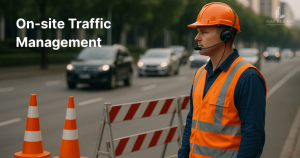Business
How Smart Retailers Handle Peak Sales Without Order Mistakes

Introduction
Retail’s busiest seasons be it festive surges or flash sales are also the most error-prone. Order mistakes, inventory mismatches, and fulfillment delays become costly and reputation-harming fast. So how do the savviest retailers stay calm under the storm? The answer lies in a robust online order management system (OMS).
The right OMS orchestrates peaks with precision routing orders, syncing inventory, accelerating fulfillment, and reducing errors when volume spikes. When peak season hits, think Black Friday, festive celebrations, or flash sales, order volumes surge and operational pressure mounts. Even seasoned retailers can falter. A single misrouted order, stockout, or delayed shipment can tarnish brand trust.
The antidote? A robust online order management system (OMS) built for scale, speed, and accuracy. Here’s how modern systems enable flawless performance, even under pressure.
Understanding the Challenges of Peak Sales
Before we dive into solutions, it’s important to understand what retailers face during high-sales periods:
- More customer traffic online and in stores
- Increased orders in short time frames
- Higher chances of inventory mistakes
- More customer service requests
- Delivery delays due to overload
- Pressure to maintain fast service
These issues can create confusion, lead to order errors, and cause customers to lose trust. But with smart planning, all of these challenges can be handled well.
Synchronized Order Capture Across All Channels
Today’s peak sales come from every direction: webstores, marketplaces, social commerce, and in-store touchpoints. Capturing and tracking each channel separately opens the door to missed, duplicated, or delayed orders.
A powerful OMS centralizes every order from web, mobile, marketplaces, calls, and more into one unified platform. This single source of truth ensures no order slips through the cracks.
Smart OMS platforms centralize every order—webstore, marketplaces, third-party carts, and even offline channels—into a unified dashboard. This eliminates duplication, ensures nothing gets missed, and provides a single source of truth for your team.
When volumes spike, centralized capture avoids errors and maintains order flow clarity.
Real-Time Inventory Visibility Prevents Overselling
Nothing sinks customer trust faster than promising out-of-stock items. When your systems aren’t synced, inventory errors multiply as sales skyrocket.
A strong OMS displays real-time stock availability across all channels warehouses, stores, and online. You can commit only what’s on hand, preventing overpromising and maintaining confidence at the checkout.
A top-tier OMS offers real-time stocks across stores, warehouses, and online channels, letting only available inventory be committed. This eliminates overselling and accurately directs fulfillment from the best source.
You keep orders flowing without risking cancellations or refunds—even when demand shifts by the minute.
Intelligent Order Routing Smooths Fulfillment
With high volumes, logistics friction spells disaster. Manual routing strains teams and increases the risk of late shipments.
Advanced OMS platforms automatically direct orders to the optimal fulfillment location, whether store, warehouse, or drop-ship—based on proximity, cost, and availability. This automation cuts errors and speeds delivery.
The best OMS platforms use rule-based logic (stock availability, proximity, cost, delivery speed) to automatically route orders to the right location, whether it’s a distribution center or a store preparing for pickup.
This automation cuts mistakes and accelerates delivery even under pressure.
Automation Shortcuts Manual Bottlenecks
Peaks slam manual processes. Hand-entering orders or toggling between systems introduces delays and mistakes.
Automation helps by:
- Generating pick lists instantly
- Updating order statuses in real-time
- Streamlining invoicing, shipping labels, and returns
Every process becomes fast and accurate, freeing staff to focus on customer care, not data entry.
Modern OMS systems automate core workflows like pick-list generation, order status updates, invoicing, and label creation. These allow staff to focus on value—like packaging, customer service—not data entry.
A lean operation under peak pressure is efficient and remarkably error-resistant.
Returns & Exchanges That Don’t Break the Flow
Returns spike during high-volume periods. Without smooth handling, returns become backlogs that frustrate customers.
A solid OMS integrates return workflows seamlessly—with pick-up, exchanges, or refunds handled like orders. Automating return authorization and restock speeds helps retailers maintain profits and maintain customer goodwill.
Omni-ready OMS handles return and exchange workflows just like orders, whether generated in-store or online. Authorization, stock re-updates, and refunds integrate seamlessly with fulfillment logic.
You reduce friction, making returns less costly and more customer-centric.
Scalability That Supports Changing Demand
When volumes skyrocket, brittle systems fail. Successful OMS platforms scale elastically adding servers, ramping users, and routing more orders without breaking.
Retargeted retailers rely on systems that grow with them, turning Black Friday or festive surges from stress triggers into seamless experiences.
True OMS platforms are elastic, designed to scale with demand, both in user load and transaction throughput.
Peak rush becomes another day of controlled stress ~ not a breakdown.
Analytics for Post-Peak Improvement
The real power lies in learning from peaks. After the rush subsides, retailers need insights—what sold? Where did errors surface? Which channels are overloaded?
OMS dashboards offer instant post-mortems: fulfillment bottlenecks, peak-load stores, stock-outs, returns rates. These insights fuel smarter inventory planning, workforce deployment, and operational improvements.
OMS dashboards reveal bottlenecks, peak-time patterns, high-performing channels, and fulfillment lag regions.
Armed with this intelligence, retailers can refine inventory planning, staffing, reordering policies, and routing logic for the next wave.
Orchestrating Peak-Season Staff & Logistics
Optimizing for peak season isn’t just software it’s orchestration across people and systems.
Before peaks, align staffing with volume trends. Train your team on siding with high-velocity picklists and exceptions handling. Use OMS data to allocate extra support during busy hours. Pre-define return flow lanes.
Coordination and training make sure human teams amplify OMS accuracy rather than fracturing it.
Set Up Order Confirmation Systems
Keeping customers informed helps avoid confusion and reduces pressure on customer service. Smart retailers set up systems to:
- Send instant order confirmations
- Share tracking numbers
- Update customers on delays or stock issues
This builds trust and helps avoid negative reviews due to lack of communication.
Monitor Operations in Real-Time
When orders are coming in fast, you need to stay aware of what’s happening. Many smart retailers use dashboards that show real-time updates on:
- Order volume
- Stock levels
- Delivery statuses
- Team performance
This helps managers act quickly if something goes wrong, like a product selling out or a delivery partner facing delays.
Have a Backup Plan
No matter how well you prepare, unexpected problems can still pop up. Smart retailers always have a Plan B. This might include:
- Backup suppliers in case of shortages
- Extra staff on call
- Alternate delivery options
- Clear refund and return policies
Having these ready reduces panic and shows customers that you’re reliable, even when things don’t go as planned.
Learn From Every Sales Season
After the rush ends, top retailers don’t just move on they analyze what happened. They:
- Review sales numbers
- Study order errors
- Ask team members for feedback
- Gather customer reviews
This helps them improve their systems for next time. Each year becomes smoother than the last.
Conclusion: GinesysOne: Peak-Proof with Smart OMS Integration
For retailers wanting a rock-solid online order management system built to deliver under peak pressure, GinesysOne stands out.
Its integrated OMS (Browntape) within the omnichannel Ginesys suite captures orders from marketplaces and webstores, routes them smartly, manages inventory sync and fulfillment, and handles returns across channels ~ all with real-time visibility and full ERP integration.
When peak demand hits, you need an online order management system that handles the heat. GinesysOne’s OMS (Browntape) embedded within its omnichannel suite does just that.
It captures orders from every channel, syncs inventory in real time, routes fulfillment intelligently, automates workflows, and manages returns seamlessly. Coupled with analytics and ERP/POS integration, GinesysOne keeps peaks predictable, not perilous.
This ensures you navigate holiday surges with confidence, not cut corners.
From Black Friday discounts to festive splurges, GinesysOne helps retailers scale confidently ~ minimizing order errors and maximizing customer delight.
Business
Solar Panel Systems: A Complete Guide to Green Energy Solutions

Introduction
Solar energy has changed the manner in which Australians recharge their homes and businesses, providing a sustainable channel for energy independence. Due to plenty of sunlight throughout the continent, solar panels have come to be as a preferred investment for home owners in order to lower electricity expenses while supporting in protecting the environment. Companies like Electrical Masters serve an essential part in helping Australians make this switch by supplying secure, high-quality solar solutions.
What Is a Solar Panel System?
A solar panel system is a setup that converts sunlight into electricity. The system collects energy from the sun using solar panels and sends it to an inverter, which turns the energy into usable power for your home or business. Any extra energy can be stored in batteries or sent back to the power grid.
A complete solar system usually includes:
- Solar panels
- A solar inverter
- Mounting structures
- Wiring and cables
- Optional battery storage
These components work together to provide clean and reliable energy throughout the day.
How Solar Panel Technology Works
Solar panels, or photovoltaic (PV) systems, directly convert sunlight into electricity using materials called semiconductors. When rays from sunlight impact the solar cells, they release electrons, generating an electrical current. The photovoltaic effect supports existing solar energy systems.
Nowadays solar panels generally have silicon cells organised in a grid structure, protected by clear glass and covered in an iron framework. The effectiveness of these systems has risen substantially in recent years, with high-end panels now generating conversion rates.
Types of Solar Panel Systems
1. Grid-Tied Solar Systems
These systems connect directly to the power grid. They do not need batteries because you can use grid electricity when your system does not generate enough power. Grid-tied systems are the most common and usually the most affordable option.
2. Off-Grid Solar Systems
These systems are completely independent from the grid. They require battery storage to supply electricity during the night or cloudy days. Off-grid systems are ideal for remote areas.
3. Hybrid Solar Systems
Hybrid systems combine both grid-tie and battery storage. They allow you to store extra energy and also access the grid when needed. Many homeowners prefer hybrid systems because they offer flexibility and backup power.
Solar Panel Installation Advantages
The installation of solar panels provides several advantages for Australian families and companies. The main advantage includes an important reduction in electricity expenses, with many systems recovering their expenditures via energy savings. Additionally, the extra electricity produced can be sold to the grid via feed-in tariffs, generating extra income.
Environmental benefits include large reduction in carbon footprint. A typical residential solar system reduces carbon dioxide production every year, equivalent to growing hundreds of trees. This contribution helps Australia’s dedication to renewable energy targets and climate change prevention.
Solar panels also improve property values, with research finding homes installed with solar systems sell for premium prices compared to non-solar property. The Clean Energy Council predicts that solar panels can add thousands of dollars to home valuations
Classifications of Solar Panel Systems
Three basic types of solar panel systems serve to various requirements and finances. Grid-tied systems connect directly to the electricity network, allowing residents to draw power as needed and export surplus energy. These devices require no battery storage but depend on grid connection.
Off-grid systems perform independent from the electricity network, using battery storage to provide power during nighttime or cloudy weather. These systems fit in areas where grid connection becomes impossible or expensive.
Hybrid systems combine grid connectivity with battery storage, offering the best of both worlds. Owners can store excess energy for later use while keeping the grid connection as backups. This adaptation provides energy security during power failures while increasing solar investment returns.
Important Installation Factors
Successful solar panel installation needs thoughtful consideration of multiple factors. Roof position and slope significantly impact the generation of electricity, with north-facing roofs. Still, east and west-facing installations can also prove very successful.
Shadow evaluation evaluates possible obstacles like trees, buildings, or chimneys that may impact system performance. Professional installers use specialized software to generate sunlight variations throughout the year, optimizing panel location for optimum energy generation.
A structural evaluation ensures that roofs can sustain rising weight and loads from the wind. Most residential roofs manage solar panels without protection, but older or damaged structures may require improvements before installation.
For people in places like solar panels Clyde installations, climate factors and government rules may impact system layout and approval procedures.
Ongoing Maintenance and Durability
Solar panels require simple to maintain due to their durable framework and lack of moving parts. Regular cleaning removes dust, leaves, and bird droppings that may impact productivity.
Periodic professional evaluations detect possible defects before they reduce performance. Qualified experts examine electrical connections, attaching hardware, and inverter functioning, assuring optimal system performance throughout its lifecycle.
Quality solar panels typically maintain ,many systems continue to generate electricity for years after guarantee durations. This durability makes solar panels good long-term investments for Australian property owners.
Common Myths About Solar Panel Systems
- Solar panels only work on sunny days: Panels can produce electricity even on cloudy days, though at lower levels.
- Solar panels damage roofs: When installed properly, solar panels do not harm roofs. They often protect the roof from weather damage.
- Solar power is too expensive: Costs have dropped significantly, and incentives make solar more affordable.
- Solar panels need constant cleaning: Most panels work well with minimal cleaning unless you live in very dusty areas.
Why Solar Power Is the Future
As the world moves toward cleaner energy, solar power is becoming a top choice. It reduces pollution, supports sustainability, and lowers long-term energy costs. Many governments encourage the use of renewable energy, making solar systems more accessible than ever.
Businesses and homeowners benefit from energy savings, increased property value, and a reduced carbon footprint. With rising awareness and advanced technology, solar energy will continue to grow.
Conclusion
Solar panel systems offer a powerful way to use clean and renewable energy. They help reduce electricity bills, lower environmental impact, and provide long-lasting power for homes and businesses. With different system types, flexible installation options, and modern technology, solar energy is now easier to access than ever before. By understanding how solar panels work, what they cost, and the benefits they bring, you can make an informed decision. Investing in a solar panel system is a smart step toward a greener future, greater energy independence, and long-term savings for your property.
Frequently Asked Questions
Q1. Do solar panels work during cloudy weather?
Yes, solar panels generate electricity during cloudy weather, but the generation decreases compared to sunny conditions.
Q2. Can I install solar panels myself?
No, Australian regulations requires qualified electricians to install solar panels for security and legal reasons. At-home installations break guarantees and insurance policies.
Q3. What size solar system do I need?
System size depends on electricity demand, roof area, and price. Most Australian homes benefit from 5-10kW systems, though expert evaluation establishes proper size.
Business
Training To Reduces On-Site Accidents in Traffic Management Jobs

Introduction
In the busy roadways and constantly evolving construction zones of British Columbia, safety is more than a requirement—it’s the heartbeat of every project. Every day, roadside workers face unpredictable conditions, from speeding vehicles to distracted drivers, while doing their part to keep infrastructure projects moving. Without proper traffic management and control, these high-risk environments can quickly turn dangerous. That’s why comprehensive training for traffic control personnel is essential to prevent accidents, protect lives, and ensure smooth, organized movement on BC’s roads.
Leading the way in this effort is Township Traffic Ltd., one of the most trusted names in traffic control services across BC. Their commitment to safety goes beyond compliance; they invest in certified training, hands-on experience, and strong on-site supervision to create safer worksites for everyone, whether managing traffic flow in Abbotsford, Langley, or throughout the Fraser Valley, Township Traffic Ltd. sets the standard for professionalism, precision, and public safety in every project they take on.
The Importance of Proper Training in Traffic Management
Traffic management involves more than holding a stop sign—it requires a deep understanding of road dynamics, communication skills, and situational awareness. Trained traffic control personnel or flaggers are responsible for protecting construction workers, guiding vehicles safely, and ensuring that road projects run smoothly without disruptions.
Proper training ensures that flaggers and traffic control professionals:
- Understand WorkSafeBC safety regulations and standards
- Know how to anticipate driver behavior and react quickly
- Communicate effectively with team members and equipment operators
- Use correct positioning and signaling techniques to prevent confusion
- Manage emergencies safely and confidently
Without comprehensive training, even a small mistake can lead to severe accidents or delays on busy roadways.
Why Traffic Management Jobs Carry High Risks
Traffic controllers and road workers often operate in unsafe environments. They stand close to moving vehicles, work during poor weather conditions, and deal with impatient drivers. Many sites involve heavy machinery, narrow lanes, and changing road layouts. Without the right skills and knowledge, workers may make mistakes that lead to injuries or serious accidents.
Here are a few reasons why these jobs carry higher risks:
- Fast-moving traffic
- Limited visibility, especially at night
- Construction equipment on-site
- Confusing detours or road diversions
- Unexpected driver behavior
- Pressure to complete tasks quickly
Because of these challenges, training is not just helpful but essential.
The Role of Proper Training in Traffic Management
Training prepares traffic workers to handle real-world challenges safely. It teaches them how to manage traffic flow, respond to emergencies, and use equipment the right way. Workers also learn how to set up signs, barriers, and cones so that drivers can understand what is happening on the road.
Proper training covers these important topics:
- Safety rules and guidelines
- Communication skills
- Hazard awareness
- Use of protective equipment
- Emergency response
- Risk assessment
- Traffic control techniques
When workers understand these areas well, they perform better and make safer decisions.
Reducing On-Site Accidents Through Professional Traffic Control Training

Accidents at construction or maintenance sites often result from poor coordination, unclear signals, or a lack of awareness among workers. Proper training directly addresses these issues in several ways:
1. Enhanced Hazard Awareness
Trained flaggers are skilled at identifying potential hazards—whether it’s blind corners, speeding vehicles, or changing weather conditions. This foresight helps prevent collisions and keeps everyone safe.
2. Better Communication on Site
Traffic control personnel are trained to maintain constant communication using radios, hand signals, and visual cues. This coordination reduces misunderstandings between workers, equipment operators, and drivers.
3. Consistent Compliance with Regulations
A well-trained team knows and follows BC’s traffic control regulations, which minimizes liability for contractors and ensures compliance with WorkSafeBC and Ministry of Transportation standards.
4. Increased Public Safety
Professional traffic control teams ensure that both pedestrians and motorists are safely guided through construction zones, reducing confusion and the risk of collisions.
5. Improved Worker Confidence and Morale
Workers who receive regular training feel more confident in their roles, which leads to fewer mistakes and a stronger safety culture across all job sites.
Real-World Examples of How Training Helps
Here are real situations where training prevents accidents:
- Workers learn to position themselves away from moving machinery.
- Traffic controllers adjust their posture and stance to stay visible to drivers.
- Teams communicate clearly during lane closures, reducing confusion.
- Workers use hand signals correctly, preventing collisions.
- Emergency steps are followed quickly during unexpected events.
These examples show how training can turn dangerous situations into safe ones.
Conclusion
In today’s fast-paced construction and roadwork environments, proper training in traffic management and control isn’t just important—it’s essential. Skilled and certified traffic control professionals bring the knowledge, awareness, and confidence needed to keep workers, motorists, and pedestrians safe. With the right training, supervision, and communication, on-site accidents can be drastically reduced—or avoided altogether—creating safer, more efficient worksites across British Columbia.
For companies seeking a dependable partner in traffic management and control, Township Traffic Ltd. stands out as a trusted local leader. Their certified flaggers and experienced supervisors deliver complete, WorkSafeBC-compliant traffic control solutions customized to each project’s unique needs. From detailed traffic management planning to on-site implementation, Township Traffic Ltd. ensures every project is completed with the highest level of safety, professionalism, and care for the community.
Business
Why Choose Professional Carpet Cleaning Services in South Yarra

Introduction
Keeping your carpets clean is essential for a healthy, fresh, and welcoming home. Over time, carpets collect dust, allergens, stains, and even odours that regular vacuuming cannot fully remove. Many people try to handle carpet care on their own, but professional help makes a clear difference in both cleanliness and long-term maintenance.
South Yarra homeowners want reliable, high-quality results, and that’s why choosing expert cleaners has become so popular. Professionals use advanced equipment, safe cleaning solutions, and proven techniques that restore the beauty and comfort of your carpets far more effectively than DIY methods. Whether you’re dealing with stubborn stains, pet messes, or everyday wear and tear, expert cleaners can refresh your carpets and extend their life.
Why Choose Professional Carpet Cleaning Services in South Yarra
1. Deep Cleaning That Home Methods Can’t Match
While vacuuming helps, it doesn’t remove hidden dirt, dust mites, or trapped allergens. Professional carpet cleaning services in South Yarra use advanced machines that reach deep into the carpet fibers. As a result, the cleaning process becomes much more effective. You enjoy carpets that look better, smell fresher, and stay clean for longer. Moreover, deep cleaning helps protect your family from allergens and bacteria.
2. Better Stain Removal for Long-Lasting Results
Tough stains like wine, coffee, mud, and pet accidents can be frustrating to deal with. Even though store-bought products offer quick fixes, they often leave marks behind. Professional cleaners use targeted solutions that break down stains without damaging your carpet. Because of this expert approach, your carpets maintain their original look and texture.
3. Eco-Friendly and Safe Cleaning Options
Many homeowners prefer eco-friendly cleaning methods today, especially as awareness about indoor air quality and chemical exposure continues to grow. Fortunately, professional carpet cleaning companies in South Yarra offer green cleaning solutions that deliver powerful results without harsh ingredients. These eco-safe products are gentle on your carpets and completely safe for kids, pets, and people with allergies or sensitive skin.
Moreover, environmentally friendly cleaning solutions help reduce indoor air pollution by eliminating the chemical residues often left behind by traditional products. Because these formulas break down naturally, they create a healthier home environment while still removing dirt, stains, and bacteria effectively.
4. Faster Drying Time for Busy Households
One major advantage of hiring experts is the reduced drying time. Their machines extract more water, so the carpet dries quickly. This means you don’t have to wait all day to walk on your floors again. Furthermore, quicker drying prevents mould growth and unpleasant smells.
5. Extends the Life of Your Carpets
Carpets are an investment, and proper maintenance keeps them looking new for years. Dust and debris slowly wear down the fibres, but professional cleaning removes these harmful particles. Therefore, regular expert care helps extend the carpet’s lifespan. This saves you money on early replacement and keeps your home looking its best.
6. Improves Indoor Air Quality
Carpets trap dirt, pollen, pet dander, and other pollutants. Over time, these contaminants affect the indoor air quality of your home. Professional cleaning removes these hidden particles thoroughly. As a result, your home feels fresher and healthier. People with allergies or asthma notice a significant improvement after professional cleaning.
7. Ideal for End-of-Lease Cleaning Needs
If you’re moving out, carpets must look spotless for a smooth inspection. Tenants across Melbourne often hire professionals to secure their 100% Bond back cleaning Melbourne requirements. Clean carpets make a strong impression on property managers, so the chances of getting your full bond back increase. With expert services, you avoid last-minute stress and get reliable results.
8. Skilled Technicians With Local Experience
South Yarra homes vary widely in carpet type, layout, and everyday usage. Some houses have delicate wool carpets, while others feature durable synthetic fibres designed for heavy foot traffic. Local carpet cleaners understand these differences well because they’ve worked with a wide range of carpet materials and home environments in the area. Their hands-on experience helps them select the right cleaning techniques, equipment, and products for each specific carpet type.
Moreover, they follow industry-approved methods that protect your flooring while delivering high-quality results. This includes using the correct water temperature, safe cleaning solutions, and suitable extraction methods to prevent damage, shrinkage, or colour fading. Their attention to detail ensures your carpet is cleaned thoroughly without compromising its texture or lifespan.
9. Saves You Time, Effort, and Energy
Cleaning carpets on your own is time-consuming. You need to lift furniture, remove stains, and ensure the carpet dries properly. Instead, professionals handle everything from start to finish. This allows you to focus on your daily tasks without worrying about the outcome. And because the job is done efficiently, you get back to your routine sooner.
10. Enhances the Overall Look of Your Home
Clean carpets instantly improve the appearance of any room. Whether you are hosting guests, preparing for a special event, or maintaining your property’s value, expert cleaning helps you achieve a polished look. Additionally, carpets feel softer and more comfortable after a thorough professional wash. Your home becomes more inviting and pleasant for everyone.
Final Thoughts
Professional Carpet Cleaning Services in South Yarra offer real value to homeowners who want clean, safe, and long-lasting carpets. With better stain removal, improved air quality, and time-saving convenience, choosing a trusted carpet cleaning service is a smart decision. And if you’re preparing for a move, pairing carpet cleaning with 100% Bond back cleaning Melbourne makes the end-of-lease process much smoother.
Moreover, better stain removal, improved indoor air quality, and time-saving convenience make expert carpet cleaning a smart decision for families, busy professionals, and anyone who wants a healthier living environment. Clean carpets also enhance the overall appearance of your interiors, making your home more inviting and comfortable.
For more information, visit this website.
-
Business2 years ago
Cybersecurity Consulting Company SequelNet Provides Critical IT Support Services to Medical Billing Firm, Medical Optimum
-
Business2 years ago
Team Communication Software Transforms Operations at Finance Innovate
-
Business2 years ago
Project Management Tool Transforms Long Island Business
-
Business2 years ago
How Alleviate Poverty Utilized IPPBX’s All-in-One Solution to Transform Lives in New York City
-
health2 years ago
Breast Cancer: The Imperative Role of Mammograms in Screening and Early Detection
-
Sports2 years ago
Unstoppable Collaboration: D.C.’s Citi Open and Silicon Valley Classic Unite to Propel Women’s Tennis to New Heights
-
Art /Entertainment3 years ago
Embracing Renewal: Sizdabedar Celebrations Unite Iranians in New York’s Eisenhower Park
-
Finance3 years ago
The Benefits of Starting a Side Hustle for Financial Freedom






























